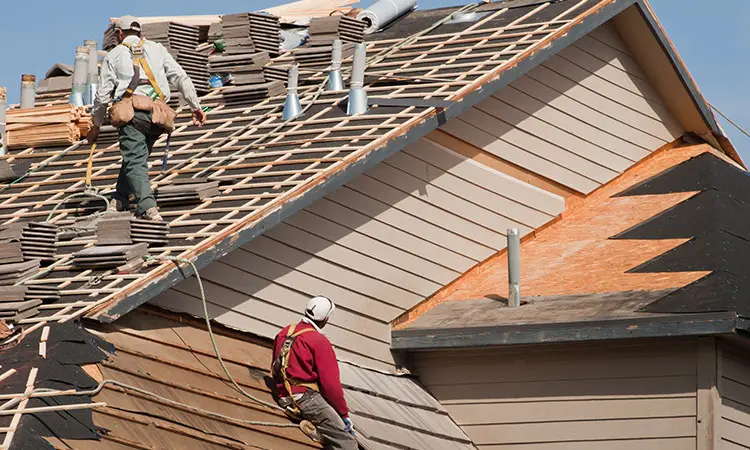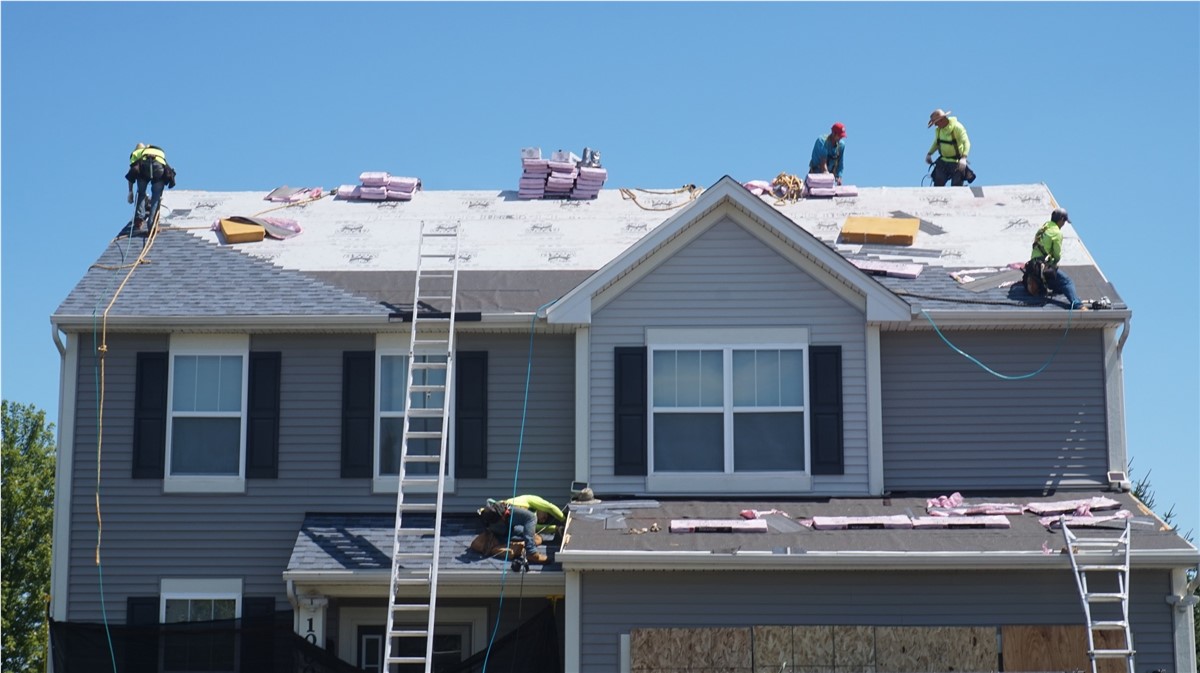Roofing Contractor: Licensed Professionals for Your Roofing Jobs
Roofing Contractor: Licensed Professionals for Your Roofing Jobs
Blog Article
Examining the Best Roof Covering Products for Replacement: An In-depth Analysis of Longevity, Expense, and Aesthetic Appeal
Picking the best roof covering material for substitute includes a mindful analysis of numerous important elements, consisting of sturdiness, cost, and visual appeal. Each choice presents special advantages and disadvantages; as an example, asphalt roof shingles are economical yet shorter-lived, while metal roof coverings promise durability at a higher investment. The visual influence of materials like clay ceramic tiles can not be overlooked, despite their costs rate point. Comprehending just how these elements communicate can substantially affect the decision-making process. As we check out these elements better, the implications for your specific situation end up being significantly pertinent.
Review of Roof Covering Products
As property owners increasingly focus on longevity and power efficiency, recognizing the numerous roof materials readily available for replacement becomes crucial. The choice of roofing products directly impacts not just the visual appeal of a home yet likewise its long-term efficiency and upkeep prices.
Among one of the most typical roofing products are asphalt shingles, steel roofing, and floor tile. Asphalt roof shingles are preferred for their cost and convenience of setup, making them a popular option for many property applications. Metal roof, which includes products such as steel and light weight aluminum, provides remarkable longevity and energy performance, frequently mirroring heat and minimizing cooling costs. Ceramic tile roof covering, frequently made from clay or concrete, is treasured for its longevity and visual allure, offering a distinct look that can improve a home's worth.
In addition, more recent materials such as synthetic roof shingles and eco-friendly roof covering systems are obtaining traction. Synthetic options imitate conventional products while giving boosted resilience and reduced maintenance needs. Green roofings, which incorporate plants, contribute to power effectiveness and biodiversity.
Toughness Analysis
When evaluating roofing materials for replacement, sturdiness is an important variable that home owners have to take into consideration. The life-span and strength of roof materials directly affect lasting upkeep and replacement costs. Various products show varying levels of resilience, making it vital to comprehend their performance under ecological stress factors.
Asphalt tiles, while preferred for their cost-effectiveness, commonly last 15 to 30 years and might call for even more frequent replacement due to wear and tear from UV exposure and extreme weather. In contrast, metal roofing offers impressive resilience, with a life expectancy of 40 to 70 years and resistance to wind, fire, and insects. Additionally, clay and concrete tiles can sustain extreme conditions, frequently outlasting half a century, although their weight requires a robust architectural assistance system.

Price Contrast
Taking into consideration the economic effects of roof covering products is essential for property owners preparing a substitute. The cost of roofing materials can vary dramatically based on aspects such as product kind, setup complexity, and regional pricing distinctions.
Asphalt tiles are amongst the most economical options, generally varying from $90 to $100 per square (100 square feet), making them a preferred choice for budget-conscious homeowners. On the other hand, steel roof can cost in between $250 and $700 per square, depending upon the sort of steel and coating selected. While metal roofs often tend to have a greater in advance cost, their longevity and power performance might lead to expense savings in time.
Clay and concrete tiles are also on the greater end of the range, balancing between $300 and $600 per square. These materials provide toughness and visual allure however call for a significant first financial investment.
Last but not least, slate roof, recognized for its phenomenal durability and timeless appearance, can range from $600 to $1,500 per square, making it the most costly option. Home owners have to consider the first costs versus the expected life expectancy and upkeep needs of each product to make an educated choice.
Aesthetic Factors To Consider
Visual factors to consider play a crucial duty in picking roof covering materials, as the roofing system dramatically impacts a home's overall look and visual charm. Property owners commonly look for products that complement visit their architectural design and boost the visual charm of their home. The shade, appearance, and account of roofing materials can substantially influence the overall aesthetic.
Products such as read this article asphalt roof shingles supply a variety of shades and designs, making them a preferred choice for property jobs. In comparison, steel roofing supplies a smooth, contemporary look and is available in numerous finishes that can suit contemporary designs. Conventional choices like clay ceramic tiles or slate can evoke an ageless beauty, attracting those who favor traditional appearances.
Moreover, the integration of roofing materials with bordering components, such as house siding and landscape design, is crucial. A natural color palette and harmonious appearances can boost a home's outside and add to its value. Property owners ought to likewise think about exactly how the selected roof material interacts with natural light, as this can influence the roof covering's look throughout the day. Inevitably, picking visually pleasing roof materials calls for mindful factor to consider of personal preference, building style, and the overall vision for the home.
Last Referrals
Choosing the appropriate roofing material can substantially boost a home's durability and aesthetic appeal. roof replacement. Based upon our analysis of longevity, expense, and visual aspects, we recommend 3 primary alternatives for property owners taking into consideration a roofing substitute
Firstly, asphalt tiles remain one of the most popular option due to their price and flexibility. They provide a great balance of cost-effectiveness and security, making them suitable for the majority of property applications. Homeowners ought to consider their durability, as they normally last 15 to 30 years.

Lastly, for those looking for an upscale visual, slate or ceramic tile roofing supplies unrivaled useful content elegance and toughness. These products come with a steep rate tag, their lifespan can go beyond 100 years, making them a worthy financial investment for luxury homes.
Inevitably, the most effective choice will certainly rely on individual spending plan, aesthetic choices, and regional environment considerations. Homeowners need to seek advice from a roofing expert to examine their details requirements.
Conclusion
Finally, choosing the appropriate roof covering material necessitates a mindful analysis of sturdiness, cost, and visual allure. Asphalt roof shingles provide an economical service with moderate durability, while metal roof masters durability and energy effectiveness. Clay and concrete ceramic tiles, although more expensive, dramatically enhance curb appeal and endure serious weather. Inevitably, the decision should align with individual budget plans, layout preferences, and regional environment variables, emphasizing the significance of expert assessment for educated selections.
Report this page